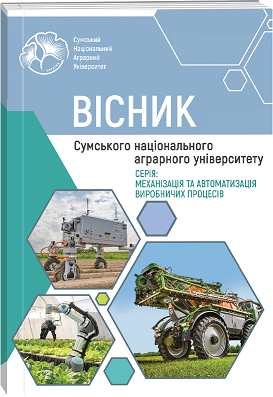ELIMINATION OF VIBRATIONS DURING MULTI-BLADE PROCESSING
Abstract
It is difficult to achieve high quality when processing on machines due to vibrations that reduce the productivity and accuracy of processing, reliability and durability of machine tools, as well as the stability of the cutting tool. The phenomenon of vibrations is most fully theoretically and experimentally investigated at single-cut sharpening on lathes. The published works (Astashev, Korendjasev, Erofeev, 2013; Tchernishev, 2010; Kudinov, 1967; Pashinin, Tchernishev, 2012; Peterson, 2002) do not pay enough attention to the issue of elimination of vibrations in the processing of metals using multi-blade tools: drills, scans, zenkers, spans, cutter, threaded and other tools. The result of studies of vibrations during multi-blade processing is not systematized, they do not pay enough attention to the effects of vibrations on the performance of makofiyuts’ makofiers, stability of cutting tools and quality indicators of parts – accuracy, roughness and properties of surface layers of parts. Such data is especially important in connection with the use of CNC machines operating with a multi-blade tool. When drawing up programs for these machines, restrictions on cutting modes that are imposed due to the possibility of vibration should be taken into account. When using multi-blade cutting, the dynamic machine system becomes more complex, which requires additional research to establish areas of vibration-free processing modes, which guarantees the quality of the parts. The novelty of the work consists in a comprehensive study of the effect of vibrations on the work of complex tools: cutter, drill, tensioners, zenkers, scans and threaded heads. This allows you to develop recommendations for the sustainable operation of the tool in the conditions of its use in modern machine systems with CNC equipment. The article summarizes the issues related to vibrations in multi-blade processing, considered technological factors affecting the intensity of vibrations. Particular attention is paid to technological methods of vibration elimination during multi-blade processing by choosing rational cutting modes, optimal design and sharpening of multi-blade tools, as well as through the use of various vibration-absorbing devices. The basis for writing the article is the author’s developments related to vibra-resistant multi-blade finishes, as well as developments made by other domestic and foreign experts (Kudinov, 1967; Tchernishev, 2010; Li, 2011; Zhu, 2015).
References
2. Vigovskiy, G.M., ta inshi. Doslidgennja vibratziy pri rizanni stali kombinovanim instrumentom [Investigation of vibrations when cutting steel with a combined tool]. Visnik Sumskogo derzgavnogo universitetu, 2008, № 2 (in Ukranian).
3. Kak izbezgat vibratciy na stanke HAAS [How to avoid vibrations on the machine HAAS], Abamet. Ru. 2021 (in Russian).
4. Kudinov, V.A. Dinamika Stankov [Machine tool dynamics]. Moskva, Mashinostroenie, 1967, 359 s. (in Russian).
5. Pashinin, A.V., Tchernishev E.A. Analiz pritchin pojavlenia vibranziy pri frezerovanii flantzev korpusov [Analysis of the causes of vibration when milling the flanges of the hulls], Nauchniy vestnik DGMA, 2012, Vip. 2 (in Russian).
6. Tchernishev, E.A. Razvitie predstavleniy o vibrancijakh pri rezanii [Development of ideas about vibrations during cutting]. Nauchniy vestnik DGMA, 2010, Vip.1. (in Russian).
7. How to reduce vibration in milling. Sandvik Coromant, 2018. URL: https://www.sandvik coromant.com.
8. Li, K.S. Analysis on affecting factors of vibration in milling. J. Liaoning Tech. Univ., 2011, 30: 884–887.
9. Peterson Linus. Vibration in Metal Cutting. Ronneby, Sweden. 2002, 101 p.
10. Zhu, H.B. Influencing factors of milling vibration based on cutting parametres and tool wear. Mech. Res. Appl. 2015, 28: 57–59.

 ISSN
ISSN  ISSN
ISSN 



